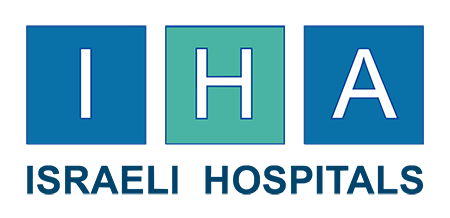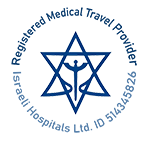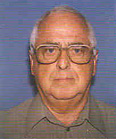Division of Vascular Surgery
About the Division

The Division of Vascular Surgery offers a comprehensive treatment to the patients suffering from blood vessels (arteries and veins) diseases.
Such services as blood vessel operations, invasive endovascular treatment and various drug therapy methods are provided here.
The division operates in close collaboration with the Institute for Noninvasive Diagnosis of Cardiovascular Diseases, the Outpatient Clinic providing advice of experienced professionals in the field of vascular diseases, the Hemodialysis Clinic (at the Institute of Nephrology) and the Vascular Biology Research Laboratory.
The Division of Vascular Surgery has 18 beds for hospitalization, including 4 beds in its intensive care unit.
Attending Personnel
The division is operated by experienced specialists in the field of vascular surgery, specially trained in this branch of medicine:
Professor Raphael Adar - the former Head of the Division (up to 1998), a leading consulting physician in the field of vascular surgery, is engaged in tutoring activities. |
|
Professor Jacob Schneiderman - Director of the Division.Expertise: vascular surgery. |
|
Dr. Moshe Halak - Deputy Director of the Division.Expertise: vascular surgery, general surgery |
|
Dr. Menachem Ron Raynich - Leading Surgeon in the Field of Vascular Surgery. |
|
Dr. Dmitry Yakubovich - Leading Surgeon in the Field of Vascular Surgery. |
|
Dr. Daniel Silberberg - Leading Surgeon in the Field of Vascular Surgery. |
|
Professor Raphael Waldan - Leading Surgeon in the Field of Vascular Surgery. |
|
Ms. Irene Levin - Head Nurse of the Division, leads a nursing team - certified nurses with higher education, who received academic specialization in the field of resuscitation. |
Types of Surgical Interventions:
- Operations on acute or chronic vascular narrowing of the upper and lower extremities.
- Operations on aortic aneurysm and peripheral arteries.
- Thoracoabdominal aneurysm operations (in collaboration with the Division of Cardiac Surgery).
- Carotid endarterectomy.
- Coronary artery bypass
- Intestinal and renal arteries bypass surgery.
- Creating an arteriovenous fistula or graft for hemodialysis.
- Thoracoscopic symphatectomy.
- Venous surgery.
Additional surgical/endovascular procedures (in collaboration with the Department of Invasive Radiology).
- Treatment of atherosclerotic aneurysm and dissecting aortic aneurysm: stent-graft using a catheter inserted through the femoral artery.
- Treatment of recurrent postoperative restenosis of the internal carotid artery: balloon angioplasty and stenting.
Therapeutic Treatment:
- Fibrinolytic treatment of acute and subacute cases of clogged arteries and anastomosis (using urokinase).
- Treatment of small blood vessels obstruction making use of prostacyclin PGI2.
- Gene therapy technique aimed at the treatment of critical peripheral ischemia of grade 3 (the technique undergoes the stage of regulatory approval by relevant authorities).
The following examinations are available at the Lubinsky Institute for Noninvasive Diagnosis of Cardiovascular Diseases:
- Doppler (with segmental pressures) for the diagnosis of thrombosis in the upper and lower extremities.
- Ultrasound diagnosis of venous insufficiency and deep vein blood clots (thrombosis) in the extremities.
- Ultrasound diagnosis of vascular diseases in the neck area (carotid and vertebral arteries).
- Ultrasound diagnosis of intestinal and renal arteries obstruction.
- Ultrasound diagnosis of abdominal aortic aneurysm and peripheral vascular diseases.
The Vascular Biology Research Laboratory is involved in extensive research activities focused on the analysis of the mechanisms of the following vascular diseases:
- Atherosclerosis obliterans in its early stages.
- Complications of atherosclerosis: mechanisms of 2 types of aneurysms formation (aneurysmogenesis) - atherosclerotic aneurysms and dissecting aneurysms.
- Inflammatory diseases of the blood vessels: Buerger's disease (thromboangiitis obliterans), Takayasu's disease or nonspecific aortoarteritis.
- Arterial thrombosis and fibrinolysis.
- Mechanisms of re-narrowing of the blood vessels after angioplasty (arterial restenosis).
- Mechanisms of new blood vessels formation (angiogenesis).




